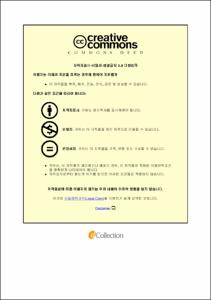일산화 탄소에 의한 혈관 내피 세포의 노화 및 급성 폐 손상에 미치는 영향
- Abstract
- Carbon monoxide (CO) is an inert, nonreactive gas molecule, has long been known as toxic due to its capacity to bind hemoglobin and disturb oxygen transport. But low dose of CO has attracted particular attention as a potential therapeutic agent because of its reported anti-inflammation, antioxidant, anti-apoptotic and cell-protective effect. We discuss recent progress in identifying new effector systems and elucidating the mechanisms of action of CO on endothelial senescence, as well as acute lung injury (ALI). Endothelial senescence is the main risk factor that contributes to vascular dysfunction and the progression of vascular disease. Firstly, we evaluate the effects of CO on endothelial senescence and to investigate the possible mechanisms underlying this process. We measured the levels of senescence associated--galactosidase (SA--gal) activity, senescence-associated secretory phenotype (SASP), reactive oxygen species (ROS) production, and stress granule (SG) in human umbilical vein endothelial cells (HUVECs). We found that 5-fluorouracil (5FU)-induced ROS generation was inhibited by CO-releasing molecules (CORM)-A1 treatment, and endothelial senescence induced by 5FU was attenuated by CORM-A1 treatment. The SIRT1 inhibitor EX527 reversed the inhibitory effect of CO on the 5FU-induced endothelial senescence. Furthermore, SIRT1 deficiency abolished the stress granule formation by CO. Our results suggest that CO alleviates the endothelial senescence induced by 5FU through SIRT1 activation and may hence have therapeutic potential for the treatment of vascular diseases.
In addition, we further confirm the protective role of CO in ALI. we measured cell viability, lipid ROS generation and the mRNA levels of prostaglandin-endoperoxide synthase 2 (PTGS2) as well as sterile alpha and Toll/interleukin-1 receptor motif-containing 1(SARM1) in human lung epithelial cells A549 cells and mouse lung epithelial cell line MLE12 cells for in vitro experiments. We also used TTP+/+ and TTP-/-mouse lung tissue for PTGS2 and SARM1 mRNA expression measurement for in vivo experiment. We found that LPS treatment induced lipid ROS generation, upregulation of PTGS2 level as well as SARM1 expression and downregulation of the cell viability while were restored by CO-releasing molecules-2 (CORM2) treatment. Additionally, TTP activation triggered by CORM2 treatment attenuated the upregulation of SARM1 and PTGS2 induced by LPS. Furthermore, TTP deficiency abolished the PTGS2 and SARM1 downregulation induced by CO. Our results showed the mechanism that TTP activation by CO ameliorates SARM1-dependent ferroptosis. We identified SARM1, one of NAD-consuming enzymes, can be degraded by TTP resulted in inhibition of lipid ROS generation and downregulation of PTGS2, leading to ameliorate ferroptosis. Thus, the crosstalk between TTP and SARM1 provides a mechanism of control the resolution of inflammation and cell death in ALI. In conclusion, CO might contribute to cellular therapies for vascular diseases and ALI.
- Issued Date
- 2022
- Awarded Date
- 2022-08
- Type
- dissertation
- Alternative Author(s)
- CHEN YUBING
- Affiliation
- 울산대학교
- Department
- 일반대학원 생명과학과
- Degree
- Doctor
- Publisher
- 울산대학교 일반대학원 생명과학과
- Language
- eng
- Rights
- 울산대학교 논문은 저작권에 의해 보호 받습니다.
- Appears in Collections:
- Life Science > 2. Theses (Ph.D)
- 파일 목록
-
-
Download
 200000633021.pdf
기타 데이터 / 2.07 MB / Adobe PDF
200000633021.pdf
기타 데이터 / 2.07 MB / Adobe PDF
-
Items in Repository are protected by copyright, with all rights reserved, unless otherwise indicated.